CRISPR Technology Market Size
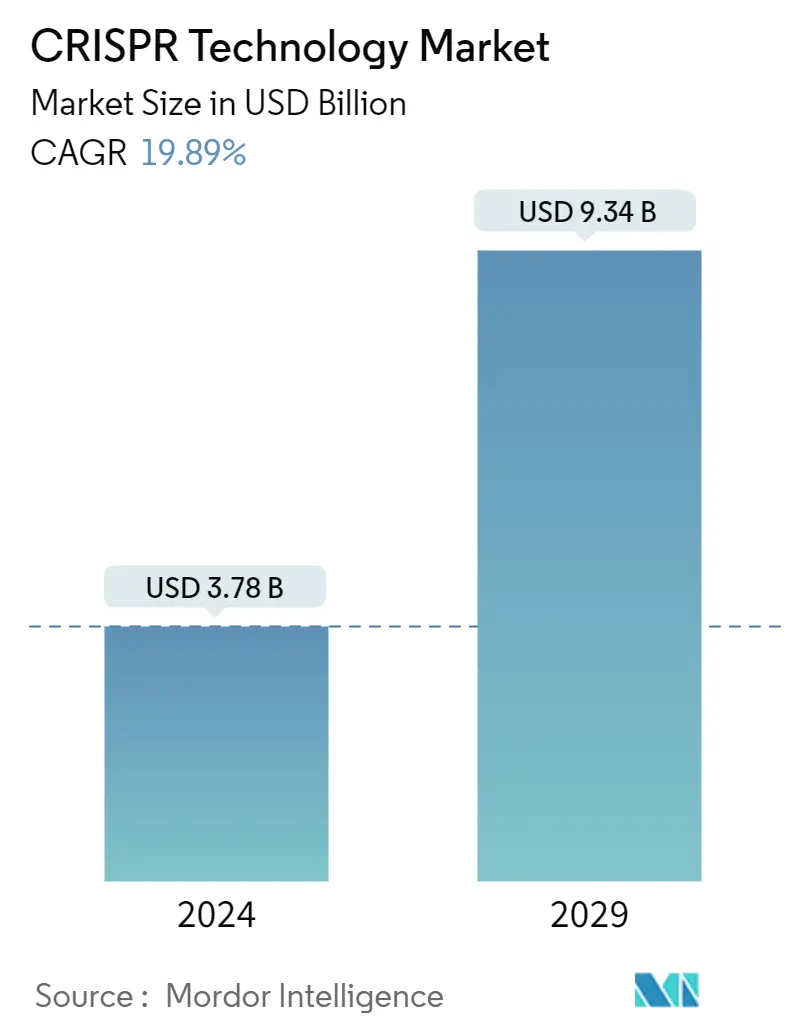
| Study Period | 2021 - 2029 |
| Market Size (2024) | USD 3.78 Billion |
| Market Size (2029) | USD 9.34 Billion |
| CAGR (2024 - 2029) | 19.89 % |
| Fastest Growing Market | Asia Pacific |
| Largest Market | North America |
Major Players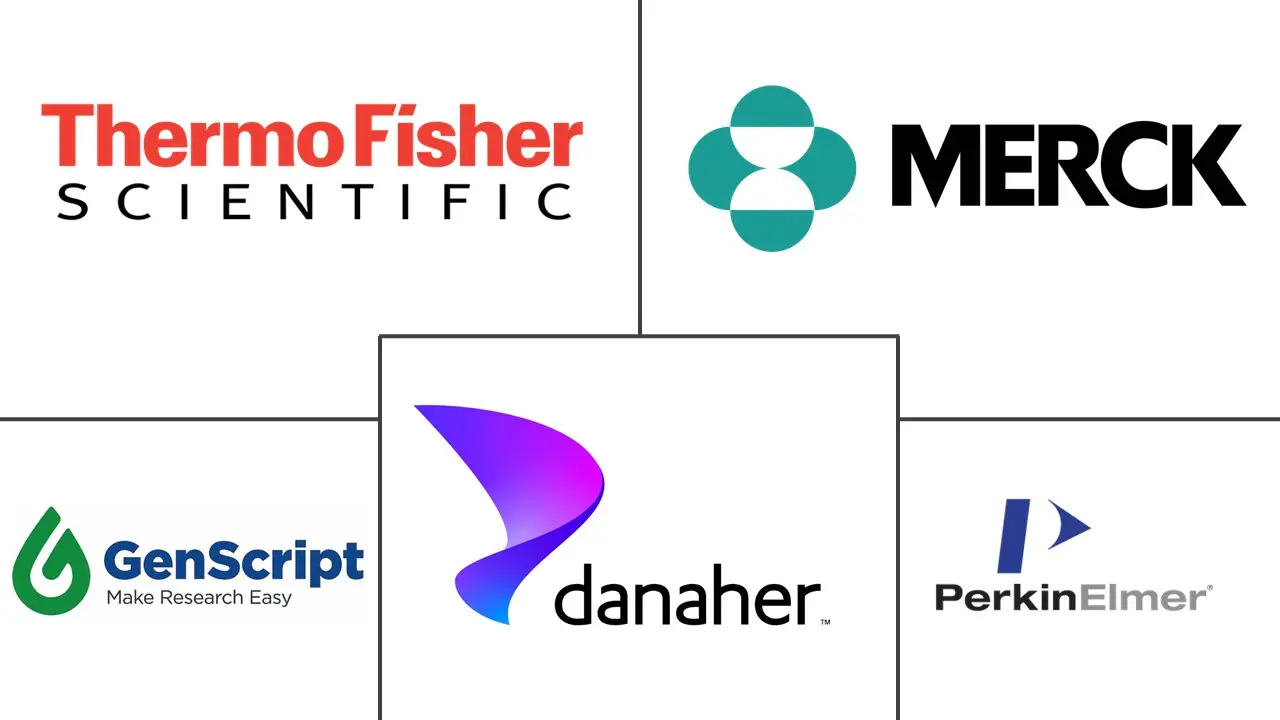
*Disclaimer: Major Players sorted in no particular order |
CRISPR Technology Market Analysis
The CRISPR Technology Market size is estimated at USD 3.78 billion in 2024, and is expected to reach USD 9.34 billion by 2029, growing at a CAGR of 19.89% during the forecast period (2024-2029).
Factors driving the global market's growth include increasing government and private funding, rising demand for and adoption of CRISPR, and technological advancements.
The growing funding and support activities by the government and private entities, along with the launch of various research projects and programs, are expected to advance CRISPR technology over time. This substantial financial backing is anticipated to enhance the market prospects for CRISPR technology. For instance, in July 2023, Pfizer invested USD 25 million in Caribou Sciences, giving the company a boost of funding for an experimental multiple myeloma treatment. The investment agreement directs Caribou to use the funds to advance CB-011. This CRISPR-edited allogeneic CAR T-cell therapy is currently in Phase 1 testing for patients with relapsed or refractory multiple myeloma.
There has also been a rise in research projects and program grants in the CRISPR domain. For instance, in October 2023, Yale School of Medicine received a grant of USD 40 million from the National Institutes of Health (NIH) for its research on developing a CRISPR gene-editing platform technology capable of reaching the human brain. The innovative new genome-editing technology could lead to treatments or cures for many neurogenetic diseases. Such funding for market players and grants from national institutes are expected to help boost the CRISPR technology market over the forecast period.
Additionally, CRISPR technology advances genome editing across the fields of medicine, biotechnology, and agriculture, enabling scientists to conduct research through faster and more efficient genome editing. For instance, according to a report published by Nature Publications in November 2022, CRISPR gene editing can alter patients' immune cells (T cells) to recognize disease-causing proteins expressed in solid tumors. This work builds on research on genome editing to redirect T cell specificity with transgenic TCR engineering. Thus, owing to its easy, quick, and inexpensive access to vectors and the resulting next-generation tools, the demand for CRISPR technology is expected to increase over the forecast period.
CRISPR-Cas9 works by precisely editing the DNA within cells, allowing researchers to correct genetic mutations associated with inherited eye diseases, neurodegenerative conditions like Alzheimer's and Huntington's, and even non-inherited diseases such as cancer and HIV. By targeting and modifying specific genes implicated in these diseases, CRISPR holds promise for potentially treating or preventing diseases at their genetic roots. For instance, according to the study published by Springer Nature in March 2023, the rapid development of CRISPR-based genome editing technology emphasizes the expansion of the CRISPR-Cas toolbox with novel Cas orthologs, engineered variants, and transposon-associated programmable RNA-guided systems.
The abovementioned report also discussed the potential applications of CRISPR-Cas systems in precise genome editing, such as base editing and prime editing, and their revolutionary impact on cardiovascular research. CRISPR-Cas systems have been demonstrated in creating genetically modified in vitro and animal models of cardiovascular diseases, which offer valuable insights into the genetic basis of cardiovascular conditions and potential avenues for therapeutic interventions. Thus, the market studied is projected to record growth over the forecast period in line with increasing government and private funding, rising demand for and adoption of CRISPR, and technological advancements. However, the high costs of CRISPR and ethical concerns related to genetic research are restraining the growth of the market.
CRISPR Technology Market Trends
The Biomedical Segment is Expected to Hold a Significant Market Share Over the Forecast Period
Applications in the biomedical segment are expected to grow at a significant rate over the forecast period due to the increased usage of CRISPR technology and growing research activities. The segment involves genome engineering, disease model studies, functional genomics, and epigenetics. The CRISPR/Cas9 system is broadly and successfully applied for biomedical discoveries in several areas, particularly sensing nucleic-acid-based biomarkers of infectious and non-infectious diseases and detecting mutations and deletions indicative of genetic diseases.
There has been a notable surge in research and development efforts surrounding CRISPR technology and its utilization within biological systems. For instance, according to a report published by the Diagnostics Journal in October 2022, the CRISPR/CRISPR-associated protein (Cas) system is a sensitive and specific biological system that can quickly identify pathogen-specific nucleic acids. The CRISPR/Cas system has also shown excellent performance in developing pathogen nucleic acid-detection technology. Researchers have made many rapid, convenient, and feasible innovations in pathogen nucleic acid detection technology in combination with various biosensing technologies. The significant adoption of CRISPR gene editing tools across various biomedical applications is contributing to the growth of this segment.
Additionally, introducing nano-carriers and improved delivery systems have enhanced the efficacy and specificity of this technology. Hence, it is increasingly adopted in gene and cell therapy as well as regenerative medicine. For instance, according to a report published by Molecular Cancer in March 2022, CRISPR-Cas9 technology has experienced a notable increase in utilizing genome editing approaches to address diverse genetic disorders and cancers. This involves the correction of known gene mutations associated with inherited genetic diseases. Hence, the widespread adoption of CRISPR/Cas9 technology, facilitated by its easy and precise genome editing capabilities, coupled with advancements in nano-carriers and delivery systems, is driving its increased applications in gene and cell therapy as well as various biomedical sciences, particularly in regenerative medicine and cancer immunotherapy.
Moreover, CRISPR technology exhibits therapeutic applications such as treating genetic disorders, discovering drugs, and identifying cancer biomarkers. These versatile therapeutic functionalities contribute to the technology's broad utility and potential impact across various professional and medical segments. For instance, in February 2023, the American Chemical Society's researchers developed a non-invasive and easy-to-use method for cancer diagnosis using blood samples. The process involves detecting cancer-related molecules in exosomes, small vesicles released by cells found in plasma. Exosomes carry biomarkers, such as microRNAs (miRNAs), which can reflect the condition of the originating cell, especially cancerous cells.
Thus, the biomedical segment is anticipated to grow significantly over the forecast period due to increased applications of CRISPR technology in the biomedical segment.
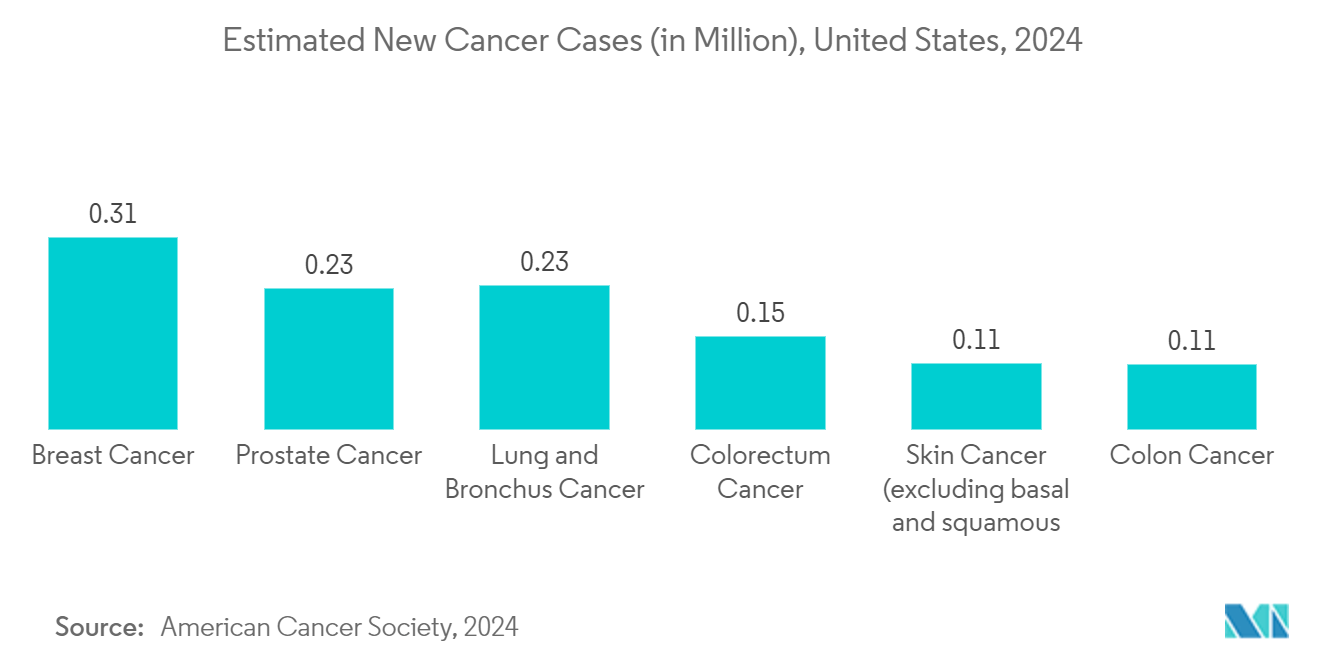
North America is Expected to Hold a Significant Market Share Over the Forecast Period
The CRISPR technology market in North America is expected to grow significantly during the study period due to technological innovations, product approvals, critical initiatives by market players, and the technology's multiple advantages.
Major companies in the market are initiating research and introducing new products to cater to the rising demand for CRISPR systems. For instance, in March 2023, Synthego Corporation launched its service partner ecosystem, CRISPR Discovery Partners, which is designed to accelerate drug discovery by providing a seamless research workflow from CRISPR editing to phenotypic data and downstream services. The ecosystem brings together high-value partners, including Arctoris, BrainXell, Curia, PhenoVista, and Pluristyx, to offer a coordinated solution for CRISPR-driven drug discovery.
Furthermore, competition among the existing market players has increased due to technological developments and the potential applications of CRISPR technology in various fields. There is an increased focus on this highly adaptable technology. This competition also encourages companies to adopt strategies like acquisition and mergers. For instance, in February 2023, Sherlock Biosciences completed the acquisition of Sense Biodetection (Sense). This acquisition accelerates Sherlock’s ability to conveniently put the most advanced CRISPR-based diagnostics in the hands of global consumers.
Major players are investing in establishing new research laboratories and production facilities to augment CRISPR systems' research and production capabilities. This proactive approach aims to create enhanced opportunities for CRISPR technologies within the market. For instance, in May 2023, Synthego Corporation opened its new good manufacturing practice (GMP) synthesis facility. This 18,000 sq. ft facility supports the growing demand for developing high-quality, clustered, regularly interspaced short palindromic repeats (CRISPR)-enabled in-vivo and ex-vivo therapeutics. The facility also includes research services for investigational new drugs, new drug applications, and biologics license applications enabling clinical studies.
Thus, the growth of the CRISPR market in North America is propelled by technological innovations, product approvals, strategic initiatives by market players, increased competition driving research and development, and significant investments in research facilities and production capabilities to meet the rising demand for CRISPR technologies.
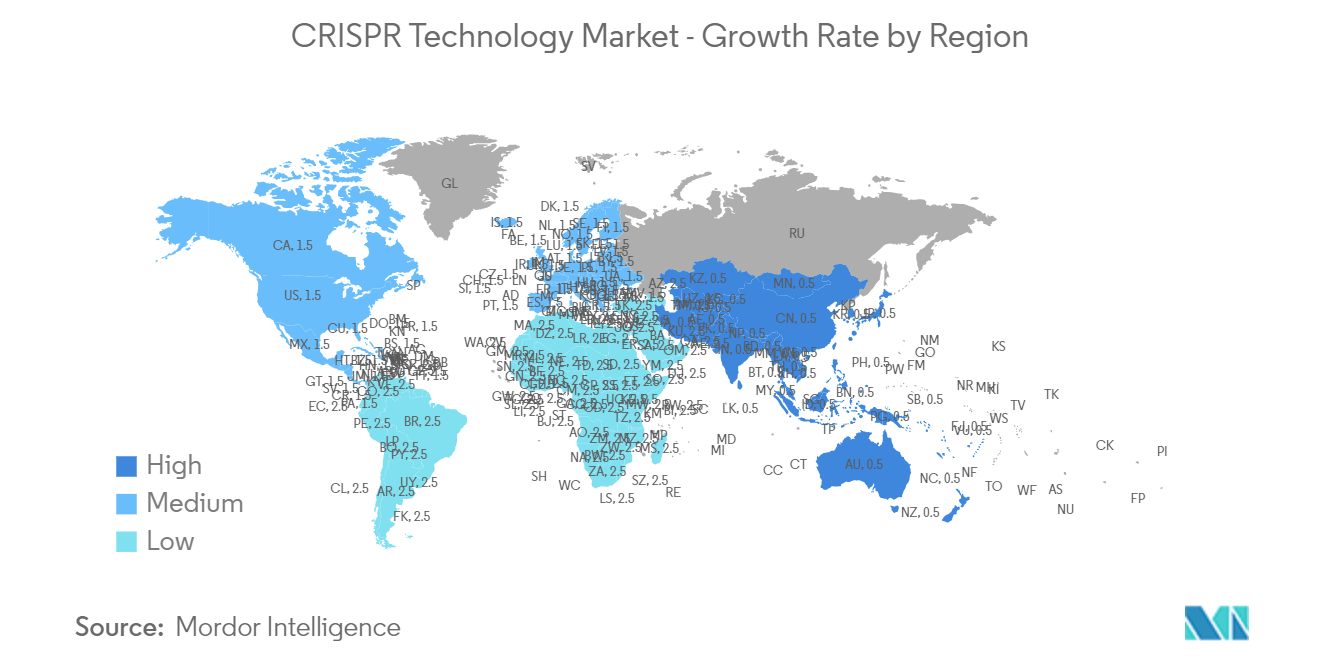
CRISPR Technology Industry Overview
The CRISPR technology market is moderately fragmented and competitive, with several major players. The rising focus of companies on personalized medicine, co-development activities, and increased cases of adverse drug reactions are expected to boost the competitive nature of the market studied. Companies like ThermoFisher Scientific Inc., Merck KGaA, GenScript, Danaher Corporation (Integrated DNA Technologies (IDT)), and PerkinElmer Inc. hold a substantial share in the market.
CRISPR Technology Market Leaders
-
Merck KGaA
-
GenScript
-
Danaher Corporation (Integrated DNA Technologies (IDT))
-
PerkinElmer Inc. (Horizon Discovery Group)
-
ThermoFisher Scientific, Inc.
*Disclaimer: Major Players sorted in no particular order
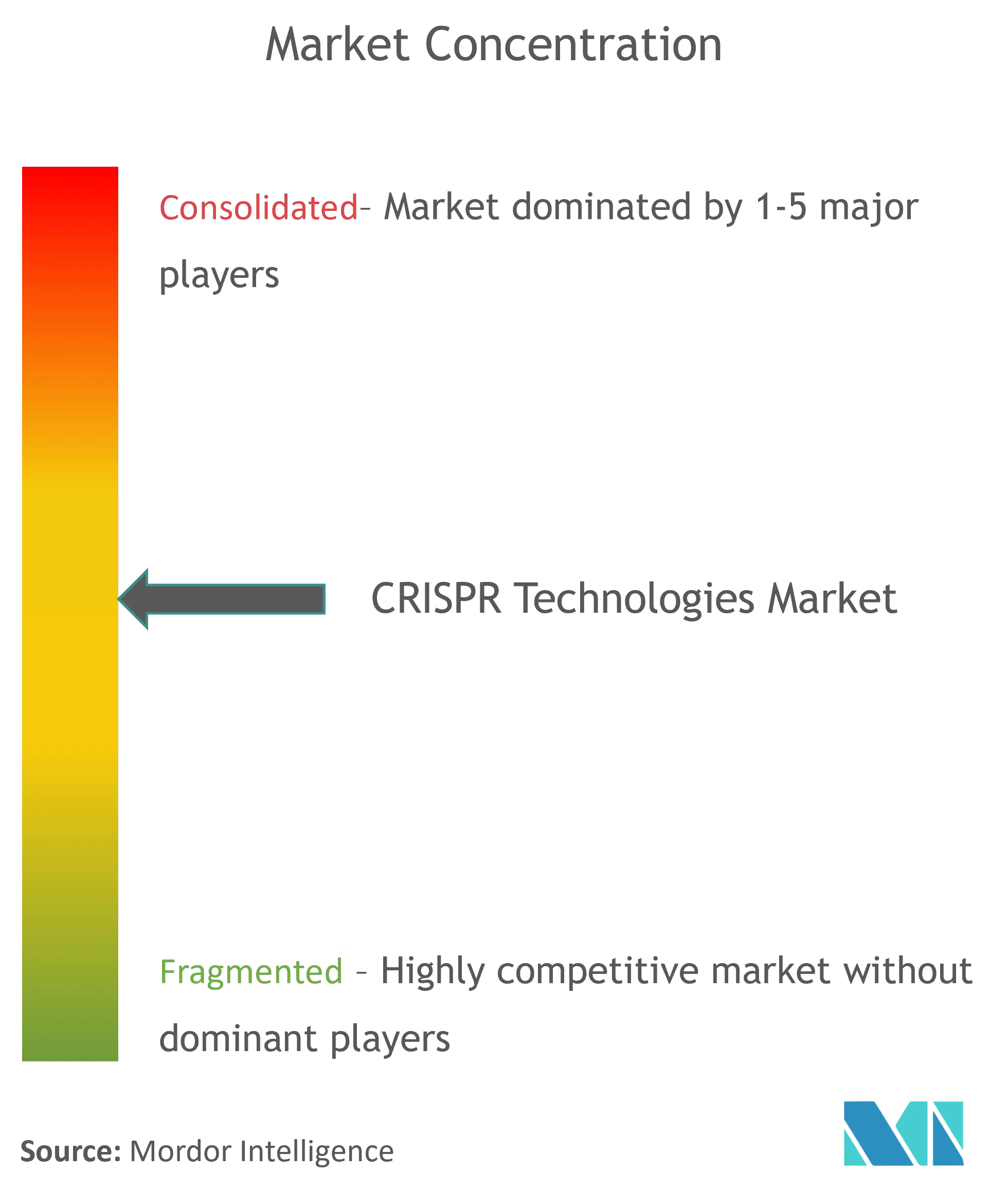
CRISPR Technology Market News
- January 2024: CRISPR Therapeutics received the US Food and Drug Administration's approval for CASGEVY (exagamglogene autotemcel [exa-cel]). It is a CRISPR/Cas9 gene-edited cell therapy for the treatment of transfusion-dependent beta-thalassemia (TDT) in patients aged 12 years and older.
- January 2024: Danaher Corporation and the Innovative Genomics Institute (IGI) launched a collaborative center for developing gene-editing therapies for rare and other diseases. Their goal is to create a new model for future development of a wide range of genomic medicines.
CRISPR Technology Market Report - Table of Contents
1. INTRODUCTION
- 1.1 Study Assumptions and Market Definition
- 1.2 Scope of the Study
2. RESEARCH METHODOLOGY
3. EXECUTIVE SUMMARY
4. MARKET DYNAMICS
- 4.1 Market Overview
-
4.2 Market Drivers
- 4.2.1 Increasing Government and Private Funding
- 4.2.2 Rising Demand and Adoption of CRISPR
- 4.2.3 Technological Advancements
-
4.3 Market Restraints
- 4.3.1 High Costs of Using CRISPR
- 4.3.2 Ethical Concerns Related to Genetic Research
-
4.4 Porter's Five Forces Analysis
- 4.4.1 Threat of New Entrants
- 4.4.2 Bargaining Power of Buyers/Consumers
- 4.4.3 Bargaining Power of Suppliers
- 4.4.4 Threat of Substitute Products
- 4.4.5 Intensity of Competitive Rivalry
5. MARKET SEGMENTATION (Market Size by Value - USD)
-
5.1 By Product
- 5.1.1 Enzymes
- 5.1.2 Kits and Reagents
- 5.1.3 Guide RNA
- 5.1.4 Other Products
-
5.2 By Application
- 5.2.1 Biomedical
- 5.2.2 Agricultural
- 5.2.3 Industrial
- 5.2.4 Other Applications
-
5.3 By End User
- 5.3.1 Pharmaceutical Companies and Biotechnology Companies
- 5.3.2 Academics and Government Research Institutes
- 5.3.3 Other End Users
-
5.4 By Geography
- 5.4.1 North America
- 5.4.1.1 United States
- 5.4.1.2 Canada
- 5.4.1.3 Mexico
- 5.4.2 Europe
- 5.4.2.1 Germany
- 5.4.2.2 United Kingdom
- 5.4.2.3 France
- 5.4.2.4 Italy
- 5.4.2.5 Spain
- 5.4.2.6 Rest of Europe
- 5.4.3 Asia-Pacific
- 5.4.3.1 China
- 5.4.3.2 Japan
- 5.4.3.3 India
- 5.4.3.4 Australia
- 5.4.3.5 South korea
- 5.4.3.6 Rest of Asia-Pacific
- 5.4.4 Middle East and Africa
- 5.4.4.1 GCC
- 5.4.4.2 South Africa
- 5.4.4.3 Rest of Middle East and Africa
- 5.4.5 South America
- 5.4.5.1 Brazil
- 5.4.5.2 Argentina
- 5.4.5.3 Rest of South America
6. COMPETITIVE LANDSCAPE
-
6.1 Company Profiles
- 6.1.1 Agilent Technologies
- 6.1.2 Cellecta Inc.
- 6.1.3 GeneCopoeia Inc.
- 6.1.4 GenScript
- 6.1.5 PerkinElmer Inc. (Horizon Discovery Group)
- 6.1.6 Danaher Corporation (Integrated DNA Technologies (IDT))
- 6.1.7 Merck KGaA
- 6.1.8 New England Biolabs
- 6.1.9 Origene Technologies Inc.
- 6.1.10 Thermo Fisher Scientific
- *List Not Exhaustive
7. MARKET OPPORTUNITIES AND FUTURE TRENDS
** Subject To AvailablityCRISPR Technology Industry Segmentation
As per the scope of the report, CRISPR technology is a tool for editing genomes. It enables researchers to alter DNA sequences and further modify gene function easily. It has several potential applications, including treating and preventing disease spread, correcting genetic defects, and improving crops.
The CRISPR technology market is segmented by product, application, end user, and geography. The product segment is further segmented into enzymes, kits, and reagents, guide RNA, and other products. The application segment is further divided into biomedical, agricultural, industrial, and other applications. The end user segment is further bifurcated into pharmaceutical companies and biotechnology companies, academics and government research institutes, and other end users (CROs, etc.). By geography, the market is further segmented into North America, Europe, Asia-Pacific, Middle East And Africa, and South America. The report offers the value (in USD) for the segments mentioned above.
| By Product | Enzymes | |
| Kits and Reagents | ||
| Guide RNA | ||
| Other Products | ||
| By Application | Biomedical | |
| Agricultural | ||
| Industrial | ||
| Other Applications | ||
| By End User | Pharmaceutical Companies and Biotechnology Companies | |
| Academics and Government Research Institutes | ||
| Other End Users | ||
| By Geography | North America | United States |
| Canada | ||
| Mexico | ||
| By Geography | Europe | Germany |
| United Kingdom | ||
| France | ||
| Italy | ||
| Spain | ||
| Rest of Europe | ||
| By Geography | Asia-Pacific | China |
| Japan | ||
| India | ||
| Australia | ||
| South korea | ||
| Rest of Asia-Pacific | ||
| By Geography | Middle East and Africa | GCC |
| South Africa | ||
| Rest of Middle East and Africa | ||
| By Geography | South America | Brazil |
| Argentina | ||
| Rest of South America |
CRISPR Technology Market Research FAQs
How big is the CRISPR Technology Market?
The CRISPR Technology Market size is expected to reach USD 3.78 billion in 2024 and grow at a CAGR of 19.89% to reach USD 9.34 billion by 2029.
What is the current CRISPR Technology Market size?
In 2024, the CRISPR Technology Market size is expected to reach USD 3.78 billion.
Who are the key players in CRISPR Technology Market?
Merck KGaA, GenScript, Danaher Corporation (Integrated DNA Technologies (IDT)), PerkinElmer Inc. (Horizon Discovery Group) and ThermoFisher Scientific, Inc. are the major companies operating in the CRISPR Technology Market.
Which is the fastest growing region in CRISPR Technology Market?
Asia Pacific is estimated to grow at the highest CAGR over the forecast period (2024-2029).
Which region has the biggest share in CRISPR Technology Market?
In 2024, the North America accounts for the largest market share in CRISPR Technology Market.
What years does this CRISPR Technology Market cover, and what was the market size in 2023?
In 2023, the CRISPR Technology Market size was estimated at USD 3.03 billion. The report covers the CRISPR Technology Market historical market size for years: 2021, 2022 and 2023. The report also forecasts the CRISPR Technology Market size for years: 2024, 2025, 2026, 2027, 2028 and 2029.
CRISPR Technology Industry Report
The CRISPR Technology Market Report provides an in-depth industry analysis, covering various segments such as product types, applications, end users, and geographical regions. The report offers valuable industry information, including market segmentation and market value, which are crucial for understanding the current industry outlook and future market predictions. This industry research highlights the market growth and growth rate, emphasizing the significant developments and trends within the CRISPR technology sector.
The report also includes a comprehensive market overview and market review, detailing the contributions of key market leaders and research companies. The industry size and industry statistics are meticulously analyzed to present a clear picture of the market dynamics and market forecast. The market analysis further delves into the market data, showcasing the market trends and market outlook that are shaping the CRISPR technology landscape.
Additionally, the report provides an industry overview and industry sales figures, offering insights into the market growth and market segmentation. The industry reports and report pdf serve as a valuable resource for stakeholders looking to understand the intricate details of the CRISPR technology market. The market report also includes a report example to illustrate the comprehensive nature of the industry research conducted.
Overall, the CRISPR Technology Market Report is a vital tool for anyone interested in the market trends, market leaders, and industry outlook of the CRISPR technology sector. The report's detailed analysis and market forecast provide a solid foundation for strategic decision-making and future planning in this rapidly evolving industry.



